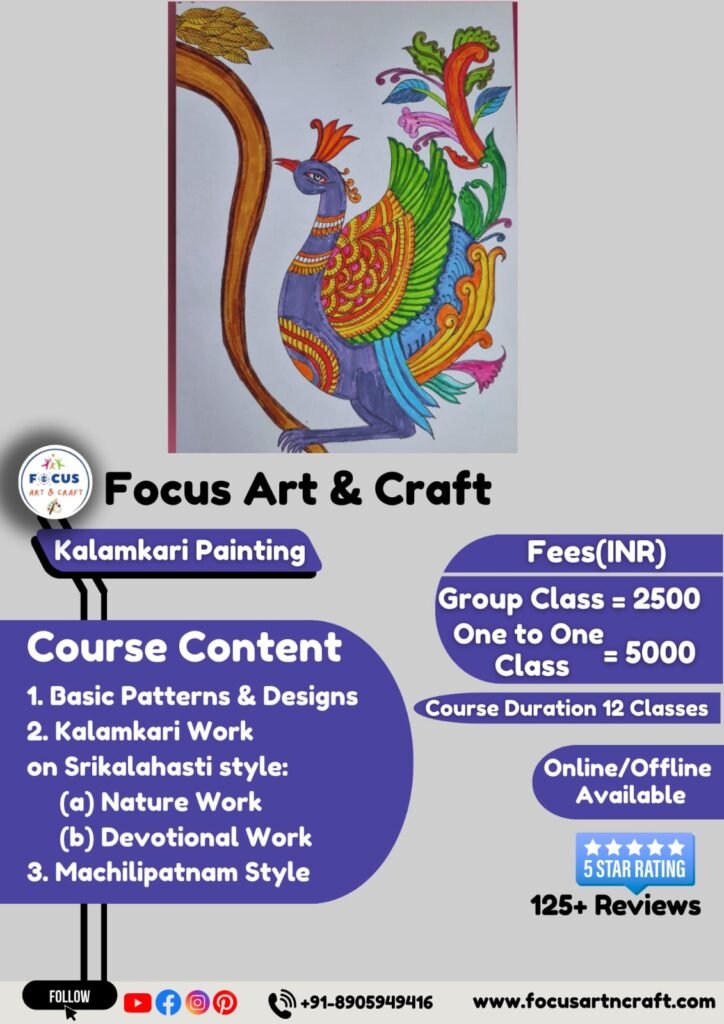
Kalamkari Painting
Kalamkari painting is a traditional Indian art form that involves hand-painting or block-printing intricate designs on fabric. The name “Kalamkari” is derived from two Persian words: **”kalam” (pen)** and **”kari” (craftsmanship)**, meaning “pen craft.”
This art form originated in Andhra Pradesh and Telangana, and it is characterized by its use of natural dyes and detailed depictions of mythological, floral, and geometric patterns. There are two main styles of Kalamkari:
1. Srikalahasti Style: Hand-drawn and painted using a bamboo pen, focusing on themes from epics like the Ramayana and Mahabharata.
2. Machilipatnam Style: Block-printed designs with intricate detailing, often featuring Persian-inspired motifs.
Kalamkari is celebrated for its vibrant colors, eco-friendly process, and intricate craftsmanship. It remains a vital part of India’s textile and artistic heritage.
Course Content:
- Basic patterns & designs
- Kalamkari work on srikalahasti style:
(a) Nature work
(b) Devotional work - Machilipatnam Style
Art Material Required for Kalamkari Painting
1. Fabric or Surface
– Paper (100gsm-300gsm)
– Cloth: Sometimes used for larger works, especially in modern adaptations.
– Canvas: Used in contemporary versions of Kalighat art.
2. Colors
– Poster or Acrylic Paints: Modern artists may use synthetic paints for ease of application and brighter finishes.
– Sketch, Markers or Brush pens
3. Brushes
Brushes – Flat, Round, Liner etc.
4. Outline Tools
Fineliner-0.05mmmm-0.8mm (BRUSTRO FINELINER PEN)
Top 5 Best Benefits of Kalamkari Painting
1. Preserves Cultural Heritage:
Kalighat paintings reflect the rich artistic traditions of Bengal, preserving the history, mythology, and evolving social commentary of the region. Supporting this art form helps maintain cultural heritage.
2. Promotes Folk Art:
These paintings serve as a narrative art form, combining visual and performing arts. They are often used to tell stories of deities like Pabuji and Devnarayan, making them an interactive and engaging way to pass on history and mythology.
3. Provides Social Commentary:
Initially, Kalighat paintings depicted religious figures, but over time, they incorporated social and political themes, offering a platform for artists to express their views on society and events of the time.
4. Encourages Creativity and Expression:
The bold outlines and vibrant colors used in Kalighat paintings inspire creativity and allow artists to experiment with various forms of expression, making it an ideal art form for personal creativity.
5. Enhances Interior Aesthetics:
The striking visual appeal of Kalighat paintings, with their vivid colors and unique style, adds cultural richness and vibrancy to any space, making it popular for home and office decor.
